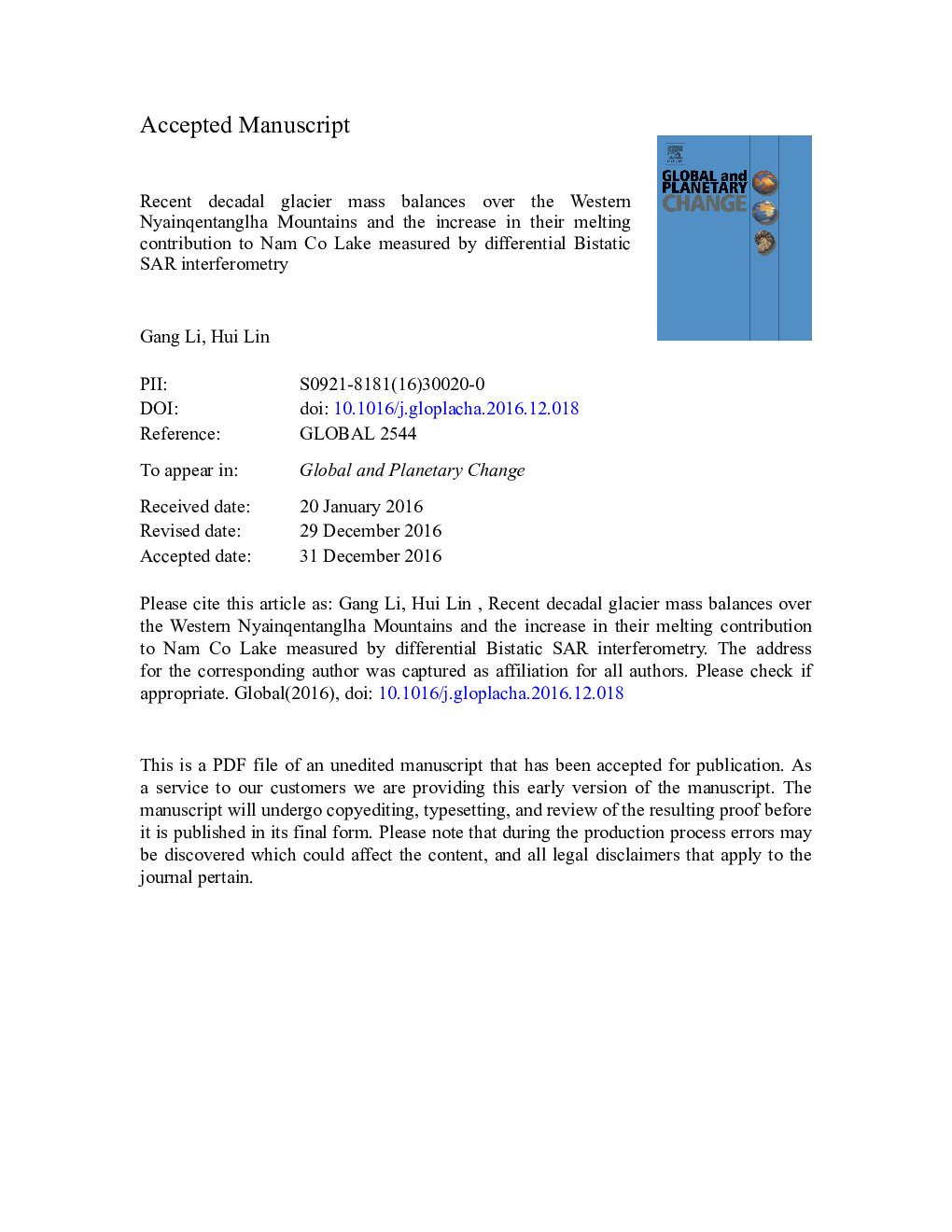| کد مقاله | کد نشریه | سال انتشار | مقاله انگلیسی | نسخه تمام متن |
|---|---|---|---|---|
| 5755304 | 1621633 | 2017 | 31 صفحه PDF | دانلود رایگان |
عنوان انگلیسی مقاله ISI
Recent decadal glacier mass balances over the Western Nyainqentanglha Mountains and the increase in their melting contribution to Nam Co Lake measured by differential bistatic SAR interferometry
دانلود مقاله + سفارش ترجمه
دانلود مقاله ISI انگلیسی
رایگان برای ایرانیان
موضوعات مرتبط
مهندسی و علوم پایه
علوم زمین و سیارات
فرآیندهای سطح زمین
پیش نمایش صفحه اول مقاله

چکیده انگلیسی
The Western Nyainqentanglha Mountains locates in the southeastern center of the Inner Tibetan Plateau (ITP). Glaciers in this region are influenced by both the continental climate of Central Asia and the Indian Monsoon system. Their melting on the western slopes feeds the Nam Co Lake, which is the second largest endorheic lake in the ITP. The elevation of Nam Co Lake increased at a rate of 0.25 ± 0.12 m yearâ 1 from 2003 to 2009. In this study, aimed at quantifying the decadal glacier mass balance in the Western Nyainqentanglha Mountains and their increasing melting contribution to Nam Co Lake; we applied the differential Bistatic SAR interferometry method to five pairs of TanDEM CoSSC datasets observed between 2013 and 2014 and SRTM acquired in 2000. The mean annual mass loss rate was â 0.235 ± 0.127 m w.e. yearâ 1 for the entire range. The mass loss rate for the northwestern slope (inside the Nam Co Lake drainage basin) and the southeastern slope (outside the Nam Co Lake drainage basin) were â 0.268 ± 0.129 m w.e. yearâ 1 and ¬ 0.219 ± 0.126 m w.e. yearâ 1, respectively. Our results agree well with previous fieldwork at the Zhadang and Gurenhekou glaciers located on the northwestern and southeastern slopes. Debris-cover suppressed glacier downwasting to some extent. By presuming that all of the melted ice flows into the lake, the glaciers' melting contribution to Nam Co Lake's increasing water volume was approximately 10.50 ± 9.00% during the period between 2003 and 2009.
ناشر
Database: Elsevier - ScienceDirect (ساینس دایرکت)
Journal: Global and Planetary Change - Volume 149, February 2017, Pages 177-190
Journal: Global and Planetary Change - Volume 149, February 2017, Pages 177-190
نویسندگان
Gang Li, Hui Lin,